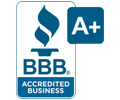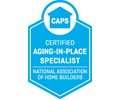
A modern kitchen is no longer just about aesthetics and appliances but about creating a hard-working, efficient space that caters to the activities and flow of daily life. It helps to understand the concept if you’re considering this in your kitchen quote. DreamMaker Bath & Kitchen of Aiken delves into how this methodology sets aside the traditional kitchen triangle template for a more practical, use-based approach.
Understanding the Traditional Kitchen Triangle
Developed in the 1940s, the kitchen triangle aimed at reducing unnecessary steps between the main appliances: the fridge, oven, and sink. But as families and homeowners indulge in more complex cooking, employ a wider array of appliances, and even integrate kitchens into their social and leisure activities, the limitation of the triangle approach has become apparent. Enter the zoned kitchen layout. Here’s a look at six of the common zones found in today’s kitchen spaces:
- Preparation Zone. The heart of the kitchen where meal creation begins, the preparation zone, is vital. It’s typically situated on a stretch of countertop or an island, offering ample space for chopping, mixing, and assembling dishes. When properly designed, it provides proximity to both consumables for easy access to ingredients and to the cooking zone to streamline the flow of meal preparation.
- Cooking Zone. This zone encompasses your stove, oven, and possibly other cooking appliances like a microwave or slow cooker. The efficiency of the cooking zone greatly benefits from the thoughtful placement of pots, pans, and cooking utensils, ensuring everything you need is within arm’s reach without cluttering the space.
- Cleaning Zone. A crucial yet often underestimated area, the cleaning zone centralizes the sink, dishwasher, and waste disposal units. Grouping these elements simplifies the clean-up process, making it more efficient and less time-consuming.
- Zone for Consumables. The consumable zone is dedicated to the storage of food items. This can be further categorized into refrigerated items and pantry goods. The key is to keep all consumables in one area, simplifying the unloading of groceries and gathering of ingredients during meal prep.
- Non-Consumable Zone. This area is designated for the storage of everyday kitchen items such as dishes, silverware, and glassware. Placement near the cleaning zone is advantageous for easy stowing away after washing.
- Leisure Zone. Acknowledging the kitchen’s role as a social hub of the home, the leisure zone offers a space for informal dining, homework, or just hanging out. This area is often integrated with the preparation zone, allowing for social interaction without interference in the cooking process.
The DreamMaker Approach
As a leading choice when searching “kitchen remodeler near me” online, we understand that every household is unique. That’s why we emphasize a personalized approach to kitchen remodeling, ensuring that each of the six zones is tailored to fit the specific needs and habits of its users.
Moving Beyond the Triangle
Unlike the rigid structure of the kitchen triangle, the 6-zone method offers flexibility, allowing zones to overlap or change in importance based on individual lifestyles. This method acknowledges the multi-functional nature of today’s kitchens. It allows for a customizable layout that adapts to modern appliances and the way real people use their kitchens — from cooking and cleaning to eating and socializing.
We’re Just a Call Away!
DreamMaker Bath & Kitchen of Aiken goes beyond aesthetics, delving into the functionality and flow of the space to create kitchens that are not only visually appealing but cater to the comprehensive needs of homeowners and their families. Call us at (803) 266-1913 today for a detailed kitchen estimate or quote. You can also reach us online and we’ll get back to you as soon as possible. We serve residents in Aiken, North Augusta, Graniteville, New Ellenton, Beech Island, Barnwell, Edgefield Park, and other nearby communities.




